 When we become parents or if we’re planning to become parents, we develop our own concept of what the “right thing” is when it comes to parenting. We may opt to be the strict disciplinarian or maybe we’ll opt for being more relaxed and even care free and still others may opt for something more in the middle of both styles.
When we become parents or if we’re planning to become parents, we develop our own concept of what the “right thing” is when it comes to parenting. We may opt to be the strict disciplinarian or maybe we’ll opt for being more relaxed and even care free and still others may opt for something more in the middle of both styles.
Two children raised by the same parents will likely give very different answers when they are asked about how they feel about their parents because they perceive things differently. While one may believe they were disciplined enough or appropriately, the other may feel that they were over-disciplined or not disciplined enough. When we become adults, many of the decisions we make when it comes to parenting are based on our own experiences and upbringing. We may choose to follow our parents’ style or go in the opposite direction.
Here are a few things to consider when you are trying to decide on the right style of you:
- Remember that your choices will affect your children’s future happiness, outlook on life and even their future relationships. We all want what’s best for our children but sometimes we don’t always make the best choices or decisions. Evaluate what you are doing and how you are communicating with your children; if you don’t like the results it’s time to change.
- How much time have you spent reading information on different parenting styles? Obviously not every book is right and not every “expert” is really an expert. But that doesn’t mean there isn’t something to be said for learning something from others – especially when it comes to things like potty training advice or dealing with a biter. If there is legitimate advice at your fingertips, there’s no point in reinventing the wheel.
- It’s a good idea to communicate your parenting style with the teachers at your child’s daycare. This way they can adopt the same techniques you use with your child and there will always be consistency in discipline and rewards. Premier Academy teachers will be happy to meet with you to discuss different parenting techniques that seem to be working for you at home or that work for us here at the center.
In the end it all comes down to: if you like the way you parent, then you’ve picked the right style of parenting for you. You will never find two parents that agree on everything and you will never find a child who agrees with his or her parents about the way they are disciplined. In a nutshell – when it comes to parenting, one size does not fit all.

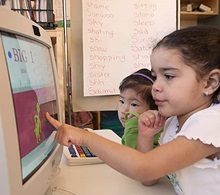 Smart phones, laptops and tablets, oh my! We love all sorts of technologies ourselves but worry about the effect of too much technology on our children. According to a study by Common Sense Media in 2013, the total
Smart phones, laptops and tablets, oh my! We love all sorts of technologies ourselves but worry about the effect of too much technology on our children. According to a study by Common Sense Media in 2013, the total  One day you’re bringing your new little bundle of joy home from the hospital, the next day they’re off to kindergarten and the day after that they are off to college. Ok, it’s not QUITE that fast but you get the idea – time flies when you’re having fun. Because it won’t be long until your baby is heading to college it’s important that you start saving for that time now. In fact, if you haven’t started planning, preparing and saving by the time your child enters kindergarten, you’re just about five years behind the eight ball.
One day you’re bringing your new little bundle of joy home from the hospital, the next day they’re off to kindergarten and the day after that they are off to college. Ok, it’s not QUITE that fast but you get the idea – time flies when you’re having fun. Because it won’t be long until your baby is heading to college it’s important that you start saving for that time now. In fact, if you haven’t started planning, preparing and saving by the time your child enters kindergarten, you’re just about five years behind the eight ball.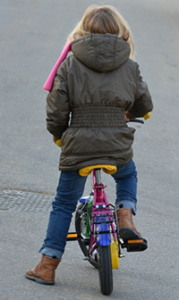 With bicycling listed as the second most popular outdoor activity in the US, it only makes sense that sometime in the possibly not-so-distant future you will be looking for a new bike for your child.
With bicycling listed as the second most popular outdoor activity in the US, it only makes sense that sometime in the possibly not-so-distant future you will be looking for a new bike for your child.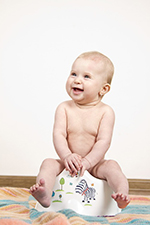 We face many challenges as parents, but toilet training may feel like one of the more daunting ones. And now that your child seems old enough to begin potty training, you also wonder how potty training works in child care. Relax. Like every other aspect of child care, you and your child’s teacher will work as partners in the process of potty learning. Potty training while in a child care or daycare setting may be easier than it is at home.
We face many challenges as parents, but toilet training may feel like one of the more daunting ones. And now that your child seems old enough to begin potty training, you also wonder how potty training works in child care. Relax. Like every other aspect of child care, you and your child’s teacher will work as partners in the process of potty learning. Potty training while in a child care or daycare setting may be easier than it is at home. Sometimes difficult questions can take parents by surprise. It can be good to plan in advance on how and what to talk to your children about when they ask about death. It is critical not to avoid or try to brush off the questions as that will only cause more confusion and perhaps even fear if children pick up your discomfort on the subject. Here are some tips on how to talk to your children when they ask the difficult questions:
Sometimes difficult questions can take parents by surprise. It can be good to plan in advance on how and what to talk to your children about when they ask about death. It is critical not to avoid or try to brush off the questions as that will only cause more confusion and perhaps even fear if children pick up your discomfort on the subject. Here are some tips on how to talk to your children when they ask the difficult questions: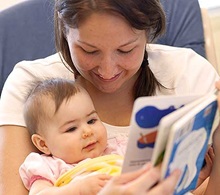 Your child isn’t going to become a great reader over night, but it can happen one book at a time. But what is the best way for you to choose the right book for your child to read?
Your child isn’t going to become a great reader over night, but it can happen one book at a time. But what is the best way for you to choose the right book for your child to read?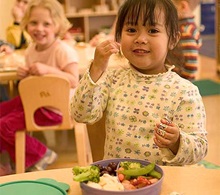 One of the most common struggles parents have is dealing with picky eaters. Does any of this sound familiar to you?
One of the most common struggles parents have is dealing with picky eaters. Does any of this sound familiar to you? Have a real one-on-one conversation with any preschooler, and you’re in for a treat — kids are soaring with ideas. As a mom, an educator, and an entrepreneur, I wondered: When do kids lose their imagination? And what can we do to foster creative thinking skills at home?
Have a real one-on-one conversation with any preschooler, and you’re in for a treat — kids are soaring with ideas. As a mom, an educator, and an entrepreneur, I wondered: When do kids lose their imagination? And what can we do to foster creative thinking skills at home? Hosting a playdate at home is one thing but going to someone else’s house – where the rules, snacks, and potty are different – is a whole new experience. Here’s how to prepare your child to have a great time – and be invited back!
Hosting a playdate at home is one thing but going to someone else’s house – where the rules, snacks, and potty are different – is a whole new experience. Here’s how to prepare your child to have a great time – and be invited back!